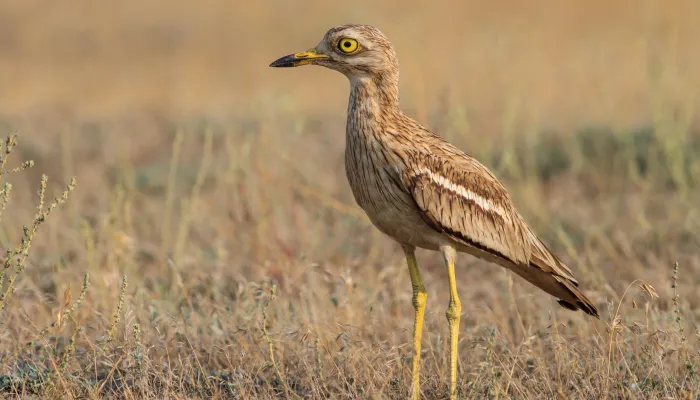| Statistics | |
|---|---|
| Length: | 38cm - 45cm |
Stone curlews are unusual waders with large yellow eyes - perfect for hunting beetles at night.
About
Stone curlews are unusual for wading birds, as you're most likely to find them on dry, stony ground. They're spring and summer visitors to the UK, where they nest on sandy heaths, well-grazed grassland, and arable fields. They spend the winter in southern Europe and northern Africa, with British birds recorded as far south as Sierra Leone.
They nest on the ground, relying on their camouflage to keep them safe. They can spend most of the day sitting still, making them very hard to spot. They become more active at dusk, when their large eyes help them hunt beetles, worms, and other invertebrates even in low light.
Stone curlews declined dramatically until there were only around 150 pairs remaining in the 1980s. The decline was linked to the loss of habitat, as well as changes in farming techniques that led to the well-hidden nests being accidentally destroyed by machinery. They're still rare, but the population is recovering thanks to dedicated conservation work. Conservationists are creating ideal habitat for nesting stone curlews, as well as working with farmers to find and mark nests on arable fields.
How to identify
An unmistakeably odd-looking bird. They're sandy brown, with darker streaking on the back and breast. There is a pale, whitish bar across the wing. The most distinctive features are the long yellow legs and large, prominent yellow eyes. They also have a heavy, yellow beak with a black tip.
Did you know?
Stone curlews have been nicknamed goggle-eyed plovers and wailing heath chickens.

